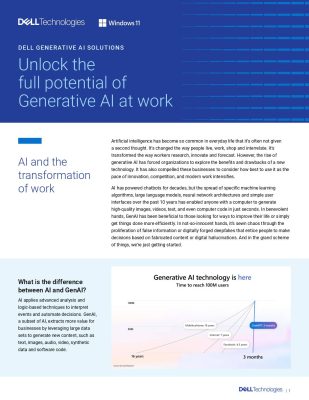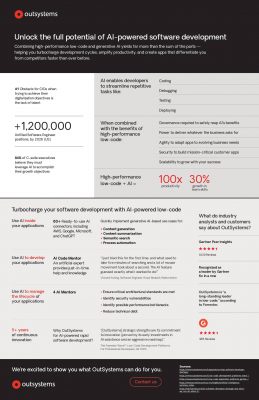Highlights:
- Model stealing involves an attacker probing a black-box ML system to reconstruct the model or extract its training data. This is critical when the data or model is sensitive and confidential.
- Adversarial training is a defensive approach used by some organizations to proactively protect their models. It involves incorporating adversarial examples into the model’s training data, teaching it to correctly identify and handle these misleading inputs.
As machine learning technology continues to evolve in advanced digital games, the competition between adversaries and defenders is set to escalate dramatically. Future research will likely focus on developing more sophisticated defenses and understanding the theoretical underpinnings of adversarial attacks.
Adversarial machine learning constitutes assessing and developing techniques to trick and trap ML models through suspicious inputs. These prompts, known as adversarial examples, are developed to make model cause inappropriate predictions or classifications. The goal is to understand how these attacks work and to develop robust models that can resist them.
Adversarial Machine Learning Examples
Adversarial machine learning examples are instances where machine learning models are deliberately exposed to deceptive inputs designed to cause them to make errors. A prominent example is in image recognition, where slight, imperceptible modifications to an image of a stop sign can cause a model to misclassify it as a yield sign, potentially leading to dangerous consequences in autonomous driving systems.
Another example is in cybersecurity, where attackers use adversarial techniques to bypass spam filters or malware detectors, inserting malicious content into emails or software that appears benign to the model. These examples highlight the requirement for robust ML systems capable of withstanding adversarial attacks.
This exemplary briefing turns the route to comprehending adversarial ML attack types that can compromise the systems, wreaking havoc in the business.
Types of Adversarial Machine Learning Attacks
Adversarial attacks vary in form, each targeting different discrepancies in models to compromise their accuracy and security.
- Poisoning attack
The attacker manipulates the training data or labels to make the model underperform during deployment. Data poisoning involves adversarial contamination of training information. As ML systems can be re-trained with operational data, an attacker might inject malicious samples during operation, disrupting future re-training.
- Evasion attack
Attackers often evade detection by disguising malware or spam to appear legitimate, without altering the training data. Examples include spoofing attacks on biometric verification systems.
- Model extraction
Model stealing involves an attacker probing a black-box machine learning system to reconstruct the model or extract its training data. This is critical when the data or model is sensitive and confidential.
- Limited-memory BFGS (L-BFGS)
The Limited-memory Broyden-Fletcher-Goldfarb-Shanno (L-BFGS) method is a non-linear gradient-oriented optimization algorithm developed to reduce image perturbations.
- FastGradient sign method (FGSM)
The method is used to develop adversarial examples by lowering the optimum perturbation applied to any image pixel, causing misclassification.
- Black box attack
Black box attacks occur when adversaries target machine learning models without any prior knowledge about their inner workings. This includes a lack of information about the model’s:
- Architecture
- Parameters
- Gradients
- Training data
- Objective function
- White box attack
These attacks are the opposite of black-box attacks, as attackers have full access to the targeted model, including its structure, traits, and gradients.
Understanding the various types of adversarial machine learning attacks provides a foundation for developing effective adversarial ML projects aimed at mitigating these threats and enhancing model robustness.
Adversarial Machine Learning Projects
There are several intriguing projects related to adversarial machine learning that you might consider. Here are a few ideas:
- Preventing adversarial attacks
This could include creating techniques to enhance the robustness of machine learning models against adversarial attacks or devising methods to detect when a model is being exposed to an adversarial example.
- Evaluating the fundamental constraints of machine learning
This practice evaluates theoretical foundation for the agility of adversarial machine learning attacks and defenses, and navigating the base limits of what can be accomplished in this territory.
- Using adversarial attacks for real-world challenges
Employing adversarial attacks to assess the robustness of machine learning models in specific applications, such as image or speech recognition.
- Probing adversarial attacks’ ethical implications
This include evaluating the potential risks and benefits of adversarial machine learning applications and creating guidelines for their responsible use.
Exploring advanced adversarial ML projects provides valuable insights into the practical challenges and real-world implications of these attacks, which in turn informs the development of effective strategies for mitigating such threats.
How can Businesses Combat Adversarial Machine Learning Attacks?
To establish a strong security posture that includes protection against adversarial AI, enterprises need strategies that start with the foundational aspects of cybersecurity.
- Detection and monitoring
AI and ML systems, like any network component, should be continuously monitored to quickly detect and respond to adversarial threats. Use cybersecurity platforms with real-time monitoring, intrusion detection, and endpoint protection, and analyze input and output data for unusual changes or activity.
Implement user and entity behavior analytics (UEBA) to establish a behavioral baseline for your models, making it easier to spot anomalies.
- Adversarial training
Adversarial training is a defensive approach used by some organizations to proactively protect their models. It involves incorporating adversarial examples into the model’s training data, teaching it to correctly identify and handle these misleading inputs.
By training an ML model to recognize attempts to manipulate its data, you prepare it to see itself as a potential target and defend against threats like model poisoning.
- Defensive distillation
Defensive distillation is a flexible technique for training machine learning models to resist adversarial attacks. A teacher network trains on a dataset and provides class probabilities—the likelihood of how inputs are classified—as soft targets for a learner network. The learner network uses this nuanced information from the teacher network, enabling it to classify inputs more deeply and effectively.
- Input sanitization and anomaly detection
These methods are essential for proactively identifying and neutralizing adversarial threats. Input sanitization involves cleansing data before it enters the model, ensuring potential threats are addressed at the entry point. Anomaly detection algorithms act as gatekeepers, continuously monitoring for data points that deviate from the norm, which could signal an ongoing attack.
Concluding Lines
Adversarial machine learning represents both a significant challenge and an exciting frontier in the field of artificial intelligence. By understanding and mitigating the risks posed by adversarial attacks, we can ensure the safe and reliable deployment of machine learning and security technologies across various domains. As we continue to innovate, the lessons learned from adversarial machine learning will play a critical role in shaping the future of AI.
Immerse yourself in a carefully curated selection of technology-related whitepapers, meticulously designed to deepen your understanding with thorough analysis and comprehensive insights.




































































